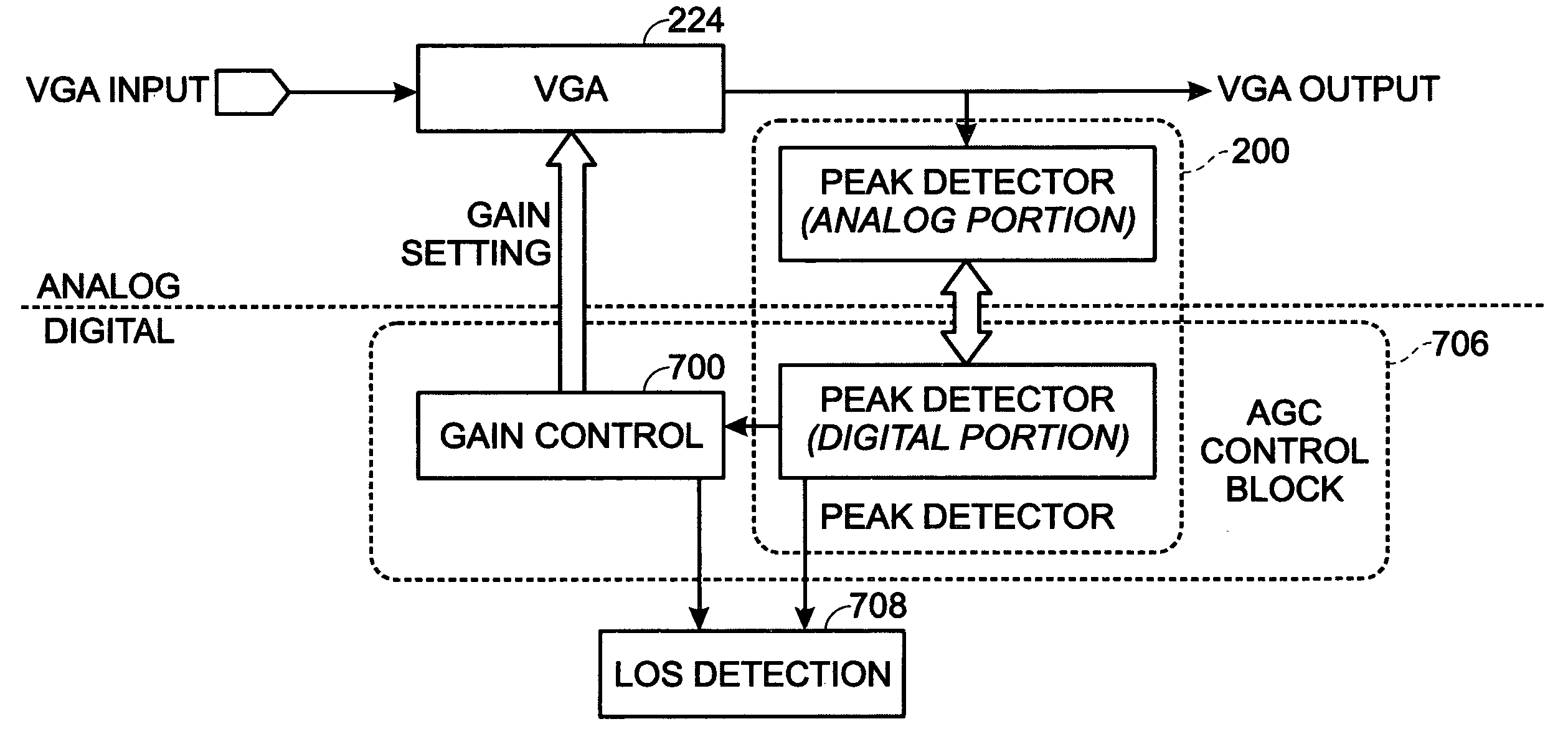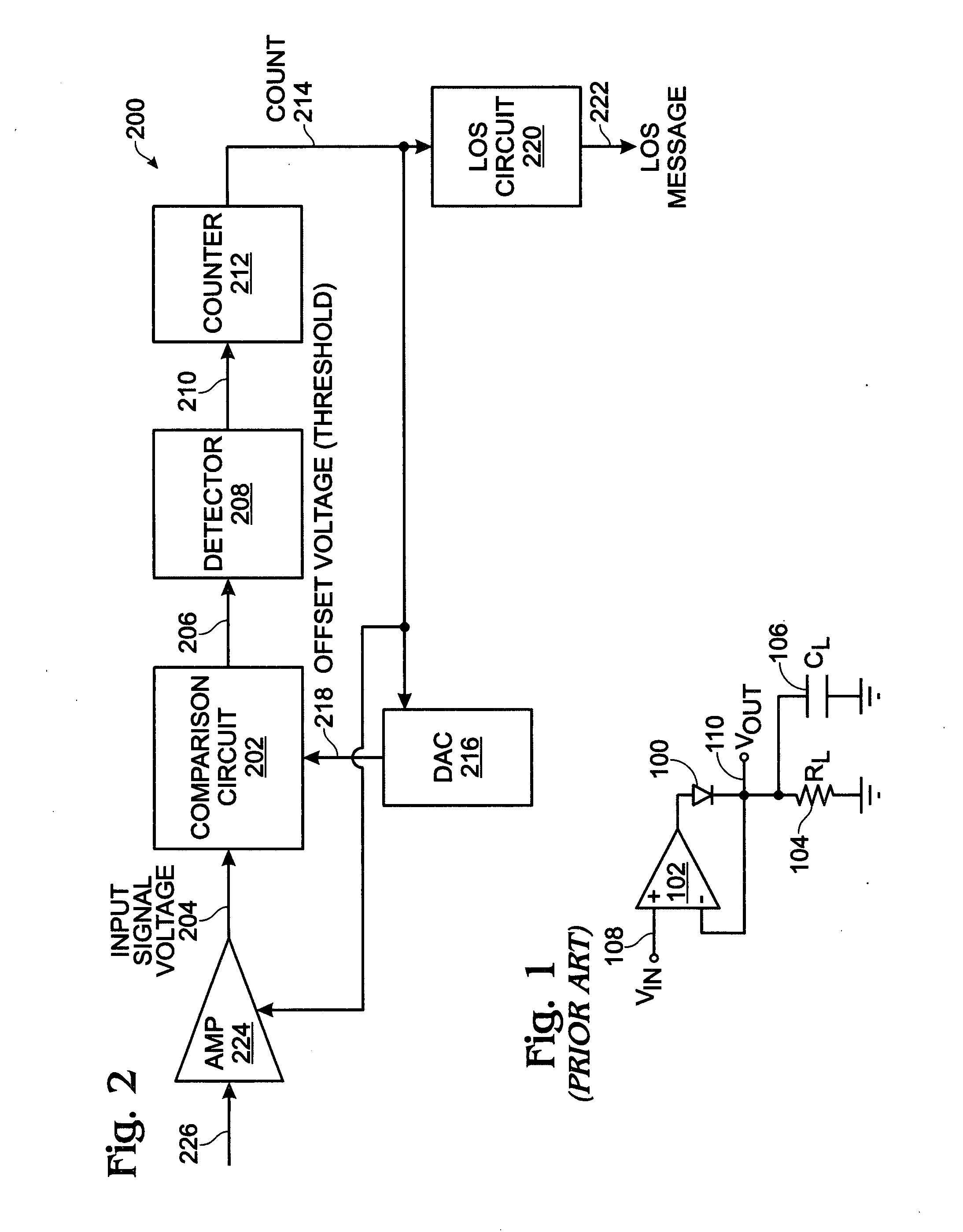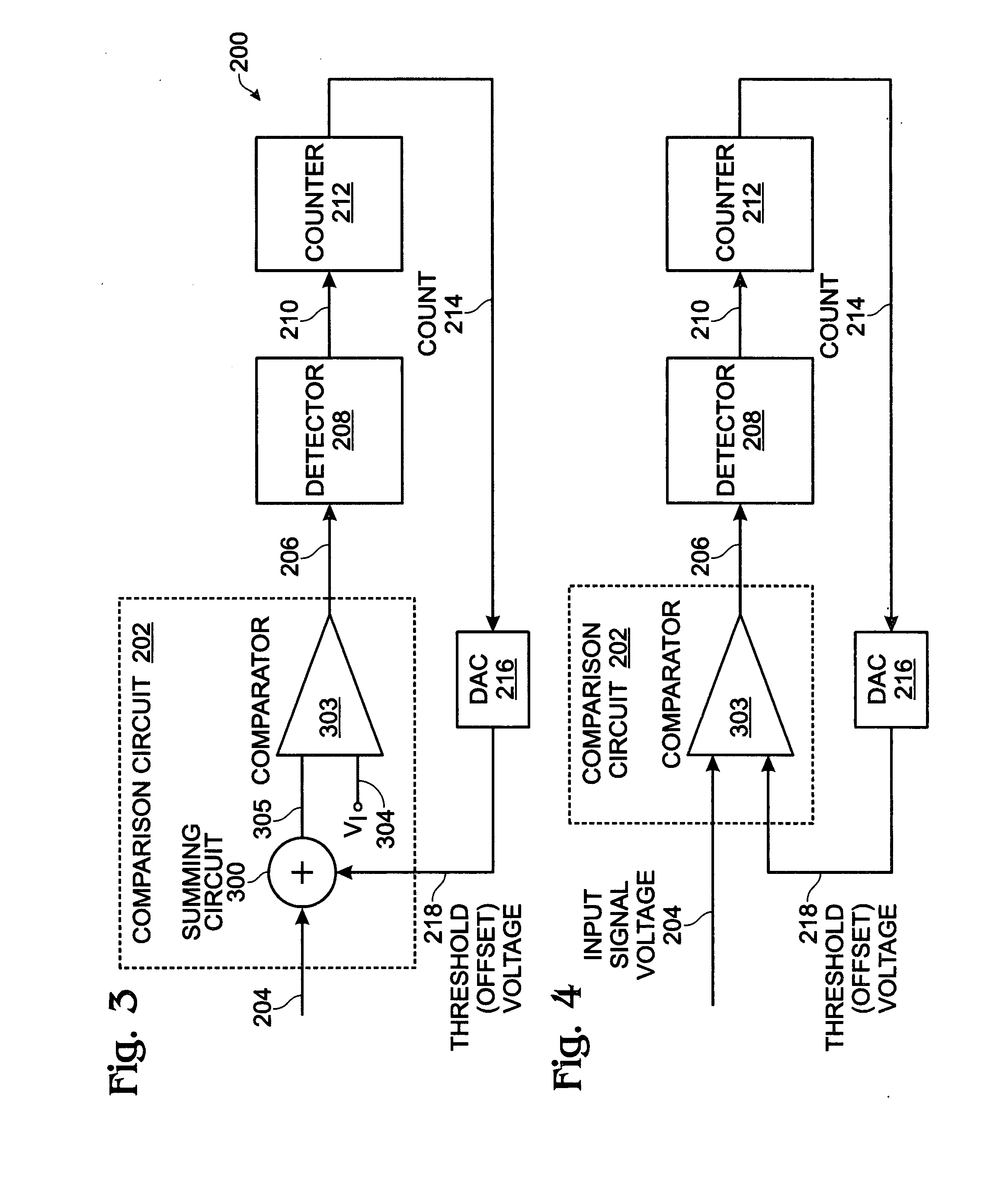System and method for signal level detection
a signal level and detection circuit technology, applied in pulse manipulation, pulse technique, instruments, etc., can solve the problems of affecting the accuracy of these measurements, and affecting the response time, so as to reduce the bandwidth requirements, improve the accuracy, and reduce the effect of vulnerability
- Summary
- Abstract
- Description
- Claims
- Application Information
AI Technical Summary
Benefits of technology
Problems solved by technology
Method used
Image
Examples
Embodiment Construction
[0028]FIG. 2 is a schematic block diagram depicting an electronic signal level detection system. The system 200 comprises a comparator 202 having a first input on line 204 to receive an analog input signal having a variable voltage. The comparison circuit 202 compares the input signal voltage to a threshold on line 218 and supplies a comparator signal at an output on line 206 for input signal voltages exceeding the threshold. A detector 208 has an input on line 206 to receive the comparator signal and an output on line 210 to supply detection signals responsive to receiving comparator signals in a periodic first time frame.
[0029]A counter 212 has an input on line 210 to receive the detection signals and an output on line 214 to supply a count in a periodic second time frame following the first time frame. More explicitly, the counter 212 increments the count in response to receiving a detection signal in the first time frame, and decrements the count in response to not receiving a d...
PUM
 Login to View More
Login to View More Abstract
Description
Claims
Application Information
 Login to View More
Login to View More - R&D
- Intellectual Property
- Life Sciences
- Materials
- Tech Scout
- Unparalleled Data Quality
- Higher Quality Content
- 60% Fewer Hallucinations
Browse by: Latest US Patents, China's latest patents, Technical Efficacy Thesaurus, Application Domain, Technology Topic, Popular Technical Reports.
© 2025 PatSnap. All rights reserved.Legal|Privacy policy|Modern Slavery Act Transparency Statement|Sitemap|About US| Contact US: help@patsnap.com



